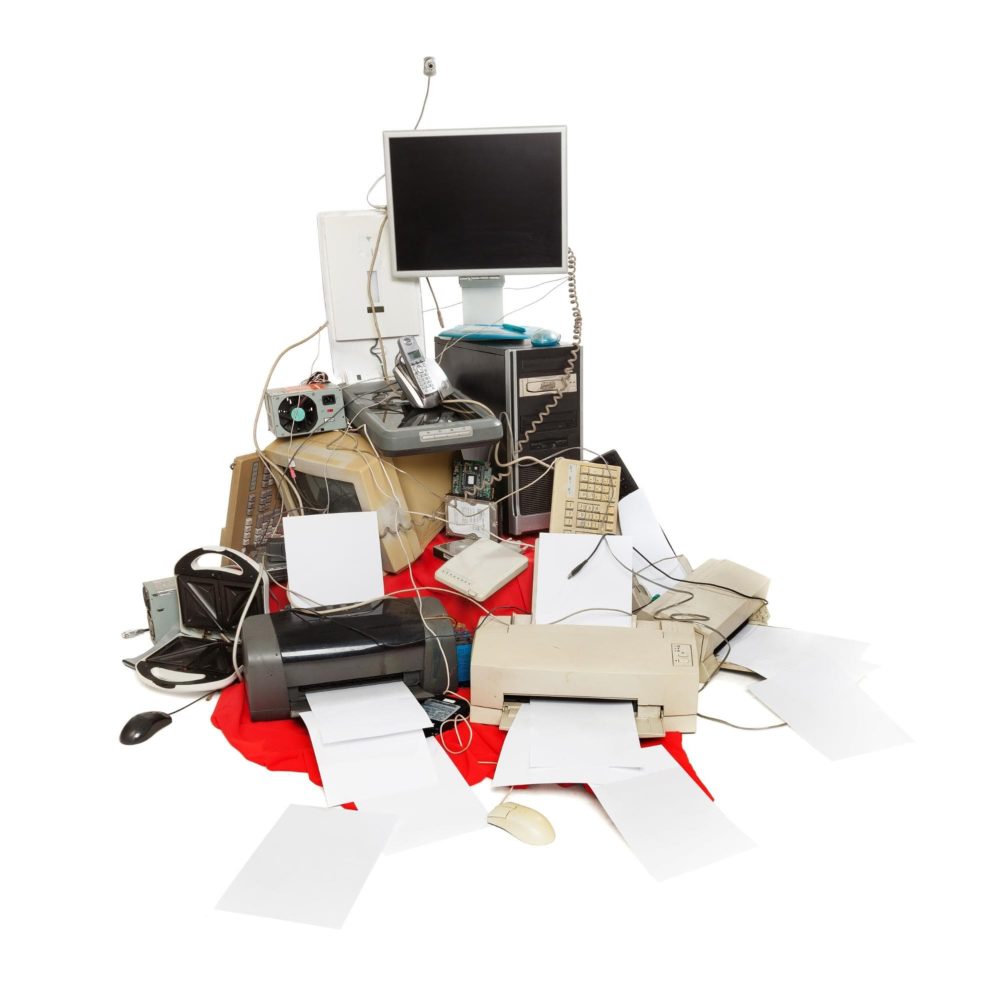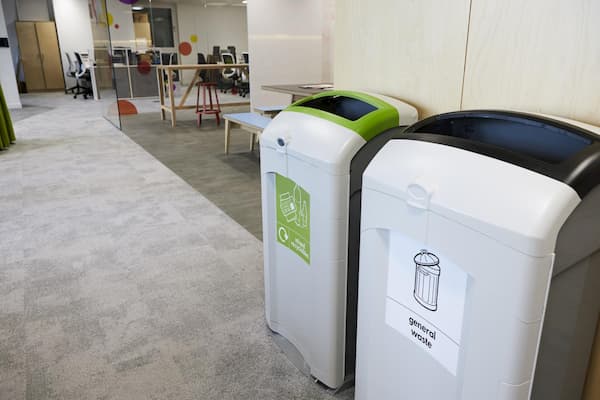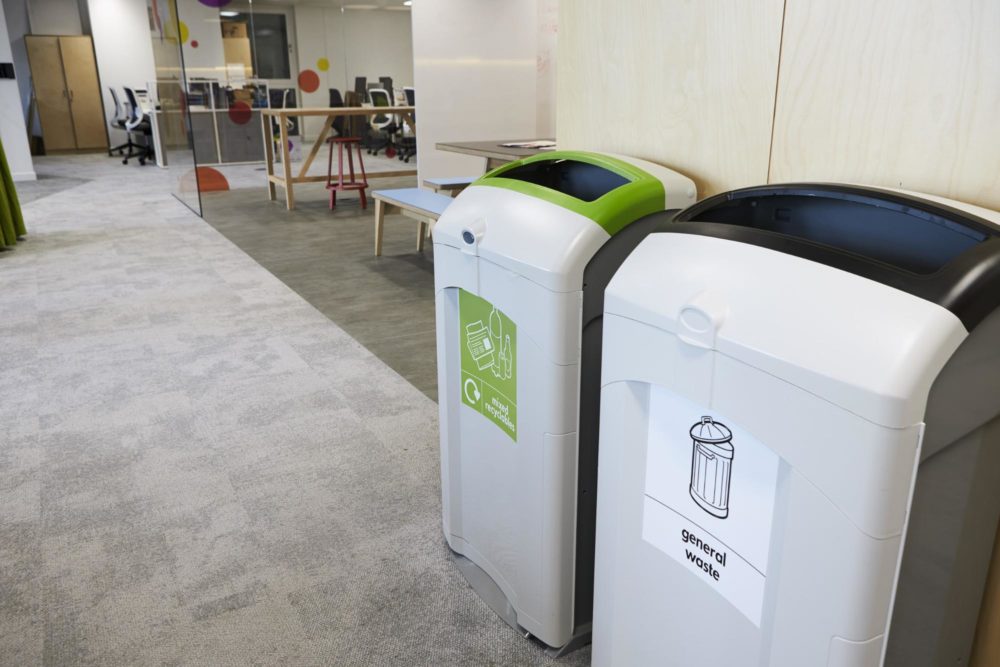As a business, you’ve decided that you want to recycle your old electronics to reap the numerous benefits that come along with it. Business electronics recycling is easy; you just have to follow a few simple steps to complete the process.
Below you’ll learn how to complete these steps to prepare your materials and see that they make it to the scrapyard where they can be adequately processed and disposed of.
Legality
First off, you may be asking yourself if doing any of this is even necessary. Can’t you throw away your old phones, printers, computers, and other electronics in the trash as if they were no different then other garbage?
The answer may surprise you… in that it just depends. It depends on the state where you reside.
Currently, the United States has no national laws governing E-waste management across the board; it varies by state. However, the EPA reports that twenty-five U.S. states currently have electronics recycling laws. Depending on where you are located, different statutes govern how you must handle your E-waste.
For example, Michigan mandates recycling and bans electronics in landfills. This requires manufacturers to have take-back programs for consumers and requires electronics manufacturers and recyclers to register with the state and pay registration fees (source: Northeast Recycling Council). However, other Midwestern states such as Iowa and Ohio do not have such laws.
Why Recycle your Business E-Waste
Including the environmental and financial reasons that go along with recycling E-waste (which you can read more about here), an excellent reason for a business to recycle E-waste is security.
Merely tossing your old electronics out with your other trash leaves you and your clients wide open. This allows for hackers and other would-be cybercriminals to burn you. It is feasible that your old computers, phones, and tablets could be found. As long as they have access, your sensitive information could be stolen if your tech isn’t correctly disposed of.

Properly Preparing your E-Waste
The best way to prepare your E-waste for business electronics recycling is to remove all data from the device, also called sanitizing. Methods for sanitizing vary by machine. It is highly recommended that no matter what device or type of data you’re working with being backed up on some form of secondary storage.
Examples of storage data backup devices include CDs, DVDs, flash and removable hard drives as well as digital storage options like cloud-based operating systems.
Methods for Data Sanitization
The U.S. Department of Homeland Security lists these methods to help you prepare your devices and electronics for disposal/recycling:
1. Deleting data
Removing data from your device can be one method of sanitization. When you delete files from a device—although the files may appear to have been removed—data remains on the media even after a delete or format command is executed. Do not rely solely on the deletion method you routinely use, such as moving a file to the trash or recycle bin or selecting “delete” from the menu. Even if you empty the trash, the deleted files are still on the device and can be retrieved. Permanent data deletion requires several steps.
Computers
Use a disk cleaning software designed to permanently remove the data stored on a computer hard drive to prevent the possibility of recovery.
Secure erase
This is a set of commands in the firmware of most computer hard drives. If you select a program that runs the secure erase command set, it will delete the data by overwriting all areas of the hard drive.
Disk wiping (SSD Recycling)
This is a utility that erases sensitive information on hard drives and securely wipes flash drives and secure digital cards. This is a standard method of recycling hard drives and solid-state drives. This also works to destroy old SIM cards. These are the small drives inside phones and tablets that allow you to store data and make phone calls through a service provider.
Smartphones and tablets
Ensure that all data is removed from your device by performing a “hard reset.” This will return the device to its original factory settings. Each device has a different hard reset procedure, but most smartphones and tablets can be reset through their settings. Physically remove the memory card and the subscriber identity module card (SIM card), if your device has one.
Digital Cameras, Media Players, and Gaming Consoles
Perform a standard factory reset (i.e., a hard reset) and physically remove the hard drive or memory card.
Office equipment
(e.g., copiers, printers, fax machines, multifunction devices)
Remove any memory cards from the equipment. Perform a full manufacture reset to restore the equipment to its factory default.
2. Overwriting
Another method of sanitization is to delete sensitive information and write new binary data over it. Using random data instead of easily identifiable patterns makes it harder for attackers to discover the original information underneath. Data stored on a computer is written in binary code or strings of 0s and 1s. Because of this, one method of overwriting is to zero-fill a hard disk and select programs that use all zeros in the last layer. Users should overwrite the entire hard disk. Then add multiple layers of new data (three to seven passes of new binary data) to prevent attackers from obtaining the original data. This is often used, but poorly secured, method of data erasure for business electronics recycling.
Cipher.exe
A built-in command-line tool in Microsoft Windows operating systems that can be used to encrypt or decrypt data on New Technology File System drives. This tool also securely deletes data by overwriting it.
Clearing
A level of media sanitation that does not allow information to be retrieved by data, disk, or file recovery utilities. The National Institute of Standards and Technology (NIST) notes that devices must be resistant to keystroke recovery attempts. This can be done from standard input devices like a keyboard or mouse and data scavenging tools.
3. Data Destruction Policy
At our secure facilities we provide Certified Data Destruction services and have the capabilities to recycle your obsolete and retired electronics in a manner that is environmentally responsible. Not only do we ensure your electronics are dismantled for full data erasure, but they are also processed in a safe and secure environment. Our services eliminate the environmental and data liability associated with improper disposal of electronic equipment and data devices.
Magnetic Media Degaussers
Degaussers expose devices to strong magnetic fields that remove the data magnetically stored on traditional magnetic media.
Solid-State Destruction
The destruction of all data storage chip memory by crushing, shredding, or disintegration is called solid-state destructioRecyclin. Solid-State Drives should be destroyed with devices that are specifically engineered for this purpose.
CD and DVD destruction
Many office and home paper shredders can shred CDs and DVDs (be sure to check that the shredder you are using can shred CDs and DVDs before attempting this method).
Is it Illegal to Throw Away Electronics?
Destroying the data in your e waste doesn’t mean that they can now be disposed of in the trash with other waste. It only protects your information from would-be hackers and data thieves; now, your materials are ready to be recycled properly. According to the National Conference of State Legislatures, there are at least 35 states and Puerto Rico that have enacted business electronics recycling laws. These laws require private or municipal entities to destroy their data entirely.
Other Data Sanitation Methods
Aside from the secure management of data on electronic devices, there are also a few physical things that you can do to ensure that your items are ready and prepared to be recycled.
Make sure to separate items such as batteries from other electronics such as phones and printers. Separate all electronics or anything tech-related from other recyclables and refuse. Separating electronics and other E-waste from one another can help things further down the line at the facility as different items may have different metals inside them. I.e., keep old phones together in one bin and old computers in another.
Remove ink and toner cartridges from printers and fax machines and sort them into separate bins. Ink and toner cartridges are not considered E-waste. You must dispose of them in their own way, which is different from how electronics are processed. Additionally, ink and toner can be messy and cause headaches dealing with it down the line at the recycling facility.

The Human Element
Don’t forget the human element of the equation. Preparing your E-waste or for any business electronics recycling program as a whole means getting your staff to buy into the program.
Educating employees on the benefits of the recycling program and security can help staff to fall in line with the plan and lead to greater success. Additionally, offering an incentive or some form of reward program to help promote recycling in your company can also be useful.
Culture is important. It is key to getting your team to buy into the idea of recycling your E-waste and the benefits of it. Otherwise, preparing your materials and successfully getting them recycled can become a daunting task.
Recycling your Electronics with GLEC
E-Waste is a massive problem in our modern, technology-driven world, and business electronics recycling makes up the lion’s share of the impact. Despite it not being federally mandated, businesses should look to recycle their E-waste. There are many merits to recycling E-waste rather than merely throwing it away. Recycling your E-waste benefits the environment in a myriad of ways helps to protect and keep your data safe and, of course, can help you to make money as well.
A great way to recycle E-waste is to contact an electronic recycling firm like Great Lakes Electronics Corporation. We will assist you in the processing and recycling of the waste in a proper, environmentally-friendly manner. We compensate our clients and customers based on the market value of the items that are brought to us.
To learn more about our services or contact us to start a collection process, contact us here. For more information about E-waste and recycling, visit our blog.

